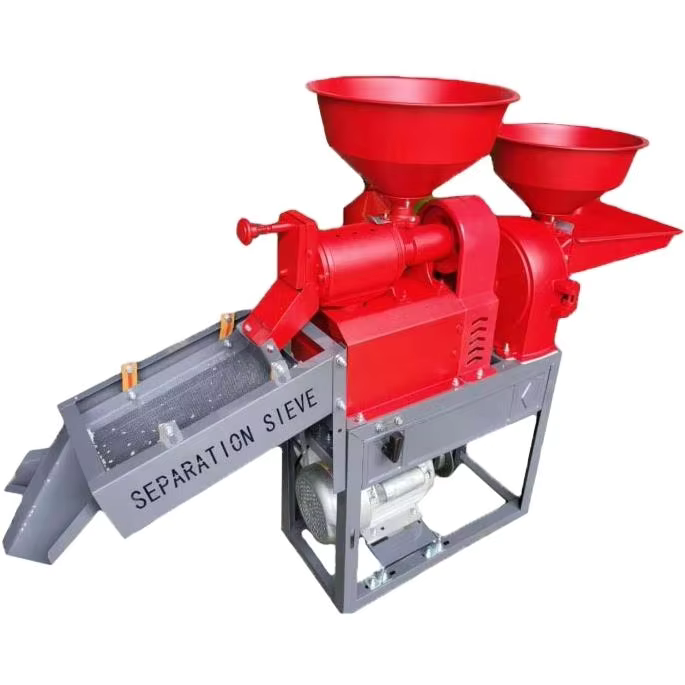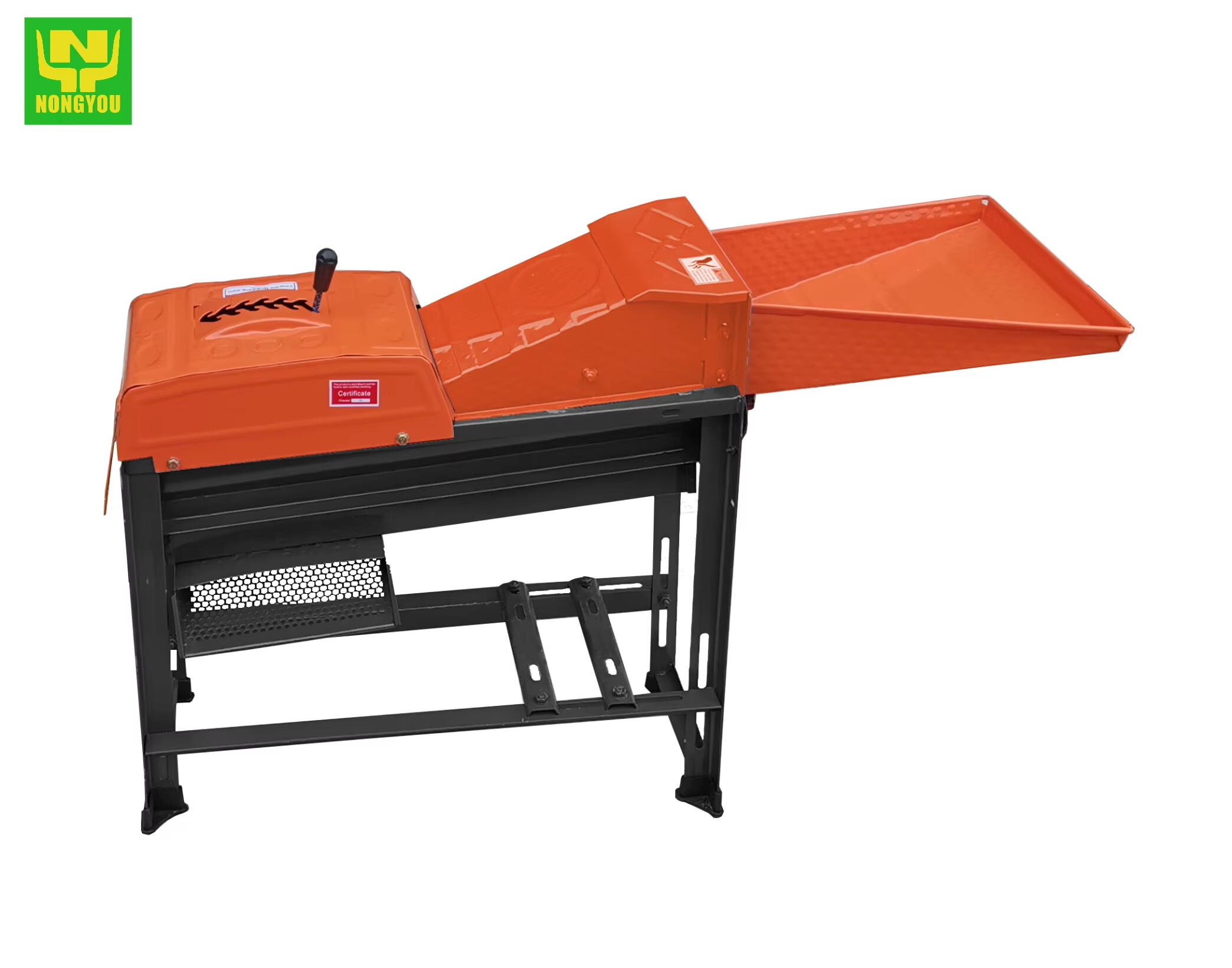Peralatan Pengolahan Pakan Modern yang Merevolusi Produktivitas Pertanian
Industri pertanian telah menyaksikan transformasi luar biasa melalui integrasi mesin pengolah pakan, yang secara mendasar mengubah cara petani mempersiapkan dan mengoptimalkan nutrisi hewan. Mesin-mesin canggih ini telah menjadi tulang punggung operasi peternakan yang efisien, memungkinkan produsen menciptakan pakan berkualitas tinggi sambil mengurangi limbah dan memaksimalkan nilai nutrisi. Dari peternakan skala kecil hingga operasi industri, mesin Pengolahan Pakan dapat secara drastis meningkatkan efisiensi operasional dan kesehatan hewan.
Komponen Utama Sistem Pengolahan Pakan
Peralatan Pengolahan Primer
Di jantung mesin pengolah pakan terdapat peralatan pengolahan primer, yang menangani tahap awal persiapan pakan. Kategori ini mencakup penggiling, penghancur, dan mesin penggiling yang memecah bahan baku menjadi partikel yang dapat dikelola. Mesin hammer mill modern dilengkapi desain rotor canggih dan saringan presisi yang memastikan ukuran partikel yang konsisten, sedangkan mesin roll memberikan kontrol unggul dalam pengolahan biji-bijian sesuai kebutuhan ternak yang berbeda.
Efisiensi peralatan pengolahan primer secara langsung memengaruhi kualitas produk pakan akhir. Sensor canggih dan kontrol otomatis membantu operator mempertahankan kondisi pengolahan yang optimal, sementara komponen tahan aus memastikan keandalan jangka panjang dan mengurangi kebutuhan pemeliharaan.
Solusi Pencampuran dan Pengadukan
Setelah pengurangan ukuran, mesin pengolah pakan menggabungkan peralatan pencampur dan pengaduk canggih untuk memastikan distribusi bahan yang seragam. Mixer dayung horizontal dan mixer sekrup vertikal merupakan dua teknologi utama dalam kategori ini. Mesin-mesin ini mampu menangani berbagai bahan, dari biji-bijian kering hingga aditif cair, menciptakan campuran homogen yang memberikan nutrisi konsisten di setiap batch.
Sistem pencampur modern sering dilengkapi panel kontrol terkomputerisasi yang memungkinkan operator menyimpan dan memanggil resep tertentu, memastikan konsistensi antar batch. Selain itu, teknologi pencampuran canggih dapat mencampurkan bahan mikro dan obat-obatan dengan akurasi tinggi, memenuhi persyaratan regulasi yang ketat dalam produksi pakan.

Teknologi Pengolahan Pakan Canggih
Sistem Pelet
Peletisasi merupakan kemajuan penting dalam mesin pengolahan pakan, mengubah bahan-bahan curah menjadi pelet yang padat dan seragam sehingga meningkatkan efisiensi pakan dan mengurangi limbah. Pabrik pelet modern dilengkapi dengan ruang pengkondisian uap, pemilihan die presisi, serta kontrol suhu otomatis untuk mengoptimalkan proses peletisasi. Sistem-sistem ini mampu menghasilkan pelet dengan berbagai ukuran dan kepadatan sesuai dengan spesies dan tahap pertumbuhan yang berbeda.
Teknologi peletisasi terbaru juga memiliki desain hemat energi yang meminimalkan biaya operasional sambil mempertahankan laju produksi yang tinggi. Sistem pendingin canggih memastikan kadar air yang tepat pada produk akhir, memperpanjang masa simpan serta menjaga kualitas pelet selama penyimpanan dan transportasi.
Teknologi Ekstrusi
Teknologi ekstrusi telah merevolusi kemampuan mesin pengolahan pakan, memungkinkan produksi pakan akuakultur mengapung, makanan hewan peliharaan, dan pakan ternak khusus. Ekstruder modern menggabungkan tekanan mekanis, panas, dan kelembapan untuk menciptakan produk dengan daya cerna dan ketersediaan nutrisi yang lebih baik. Proses ini juga dapat mengurangi faktor anti-nutrisi dan meningkatkan tingkat konversi pakan.
Sistem ekstrusi canggih menawarkan kontrol tepat terhadap parameter proses, memungkinkan produsen menyesuaikan suhu, tekanan, dan waktu tahan untuk mencapai karakteristik produk tertentu. Fleksibilitas ini membuat teknologi ekstrusi sangat berharga dalam memproduksi pakan khusus yang memenuhi berbagai kebutuhan nutrisi.
Sistem Integrasi dan Otomasi
Solusi Kontrol dan Pemantauan
Mesin pengolah pakan modern dilengkapi sistem kontrol canggih yang memungkinkan operasi dan pemantauan berbagai tahap proses secara mulus. Pengendali logika terprogram (PLC) dan antarmuka manusia-mesin (HMI) memberikan operator data dan kemampuan kontrol secara waktu nyata. Sistem-sistem ini dapat secara otomatis menyesuaikan parameter proses untuk menjaga kinerja optimal dan kualitas produk.
Solusi pemantauan canggih melacak parameter penting seperti suhu, kadar kelembapan, dan konsumsi energi, membantu operator mengidentifikasi potensi masalah sebelum memengaruhi produksi. Kemampuan pemantauan jarak jauh memungkinkan tim dukungan teknis memberikan bantuan dalam penanganan gangguan dan optimasi dari lokasi mana pun di dunia.
Integrasi Penanganan dan Penyimpanan Material
Sistem penanganan material yang efisien merupakan komponen penting dalam instalasi mesin pengolahan pakan modern. Sistem konveyor otomatis, elevator ember, dan solusi transportasi pneumatik memastikan aliran material yang lancar di seluruh fasilitas pengolahan. Sistem penyimpanan cerdas dengan kemampuan manajemen inventaris membantu operator menjaga tingkat bahan baku dan penyimpanan produk jadi secara optimal.
Integrasi teknologi identifikasi frekuensi radio (RFID) dan sistem barcode memungkinkan pelacakan bahan baku dan produk jadi secara akurat, mendukung persyaratan ketertelusuran dan protokol kontrol kualitas. Sistem penimbangan dan pencampuran canggih memastikan proporsi bahan baku yang tepat serta formulasi pakan yang konsisten.
Pertimbangan Pemeliharaan dan Optimalisasi
Strategi Pemeliharaan Preventif
Pengoperasian mesin pengolah pakan yang sukses memerlukan program perawatan komprehensif yang mencegah kegagalan peralatan dan mengoptimalkan kinerja. Sistem modern sering mencakup fitur perawatan prediktif yang memantau keausan komponen dan memberi peringatan kepada operator tentang kemungkinan masalah sebelum menyebabkan waktu henti. Jadwal inspeksi dan perawatan rutin membantu memastikan kualitas produk yang konsisten serta umur pakai peralatan maksimal.
Alat diagnostik canggih dan sistem pemantauan kondisi memungkinkan tim perawatan mengidentifikasi pola keausan dan menjadwalkan intervensi selama periode waktu henti terencana. Pendekatan proaktif ini meminimalkan kerusakan tak terduga, mengurangi biaya perawatan, sekaligus memaksimalkan ketersediaan peralatan.
Teknik Optimasi Kinerja
Mengoptimalkan kinerja mesin pengolah pakan melibatkan perhatian cermat terhadap parameter operasi dan evaluasi rutin efisiensi sistem. Peralatan modern sering dilengkapi sistem pemantauan energi yang membantu operator mengidentifikasi peluang untuk mengurangi konsumsi daya. Penyesuaian halus parameter pengolahan berdasarkan karakteristik bahan baku dan spesifikasi produk yang diinginkan dapat secara signifikan meningkatkan kualitas hasil produksi dan mengurangi biaya operasional.
Pelatihan operator secara berkala dan pemutakhiran prosedur operasi standar memastikan kinerja yang konsisten serta membantu menjaga standar kualitas produk yang tinggi. Penerapan prinsip manufaktur ramping (lean manufacturing) dan program peningkatan berkelanjutan dapat lebih meningkatkan efisiensi sistem secara keseluruhan.
Pertanyaan yang Sering Diajukan
Bagaimana mesin pengolah pakan meningkatkan kualitas pakan?
Mesin pengolah pakan meningkatkan kualitas pakan melalui pengurangan ukuran partikel yang tepat, pencampuran bahan baku secara seragam, serta teknik pemrosesan termal yang meningkatkan ketersediaan nutrisi. Peralatan modern menjamin karakteristik produk yang konsisten dan dapat mengurangi faktor anti-nutrisi sekaligus meningkatkan palatabilitas dan daya cerna.
Faktor-faktor apa saja yang harus dipertimbangkan saat memilih mesin pengolah pakan?
Pertimbangan utama meliputi kebutuhan kapasitas produksi, jenis bahan baku yang akan diproses, karakteristik produk akhir yang diinginkan, ruang yang tersedia, efisiensi energi, serta kebutuhan perawatan. Selain itu, pertimbangkan kemampuan otomasi, tingkat keahlian operator yang dibutuhkan, dan potensi untuk ekspansi di masa depan.
Seberapa sering mesin pengolah pakan harus dirawat?
Frekuensi perawatan tergantung pada intensitas penggunaan, jenis bahan yang diproses, dan rekomendasi pabrikan. Secara umum, disarankan membersihkan setiap hari, melakukan inspeksi mingguan, serta pemeriksaan perawatan menyeluruh bulanan. Komponen kritis mungkin memerlukan penggantian berkala berdasarkan pola keausan dan jam operasional.
Apa saja fitur keselamatan yang harus dimiliki mesin pengolah pakan?
Fitur keselamatan penting meliputi sistem berhenti darurat, pelindung peralatan, sistem penangkap debu, dan kunci keselamatan pada titik akses. Mesin modern juga sebaiknya dilengkapi dengan fitur pengurangan kebisingan, ventilasi yang memadai, serta sinyal peringatan yang jelas untuk status operasional.

